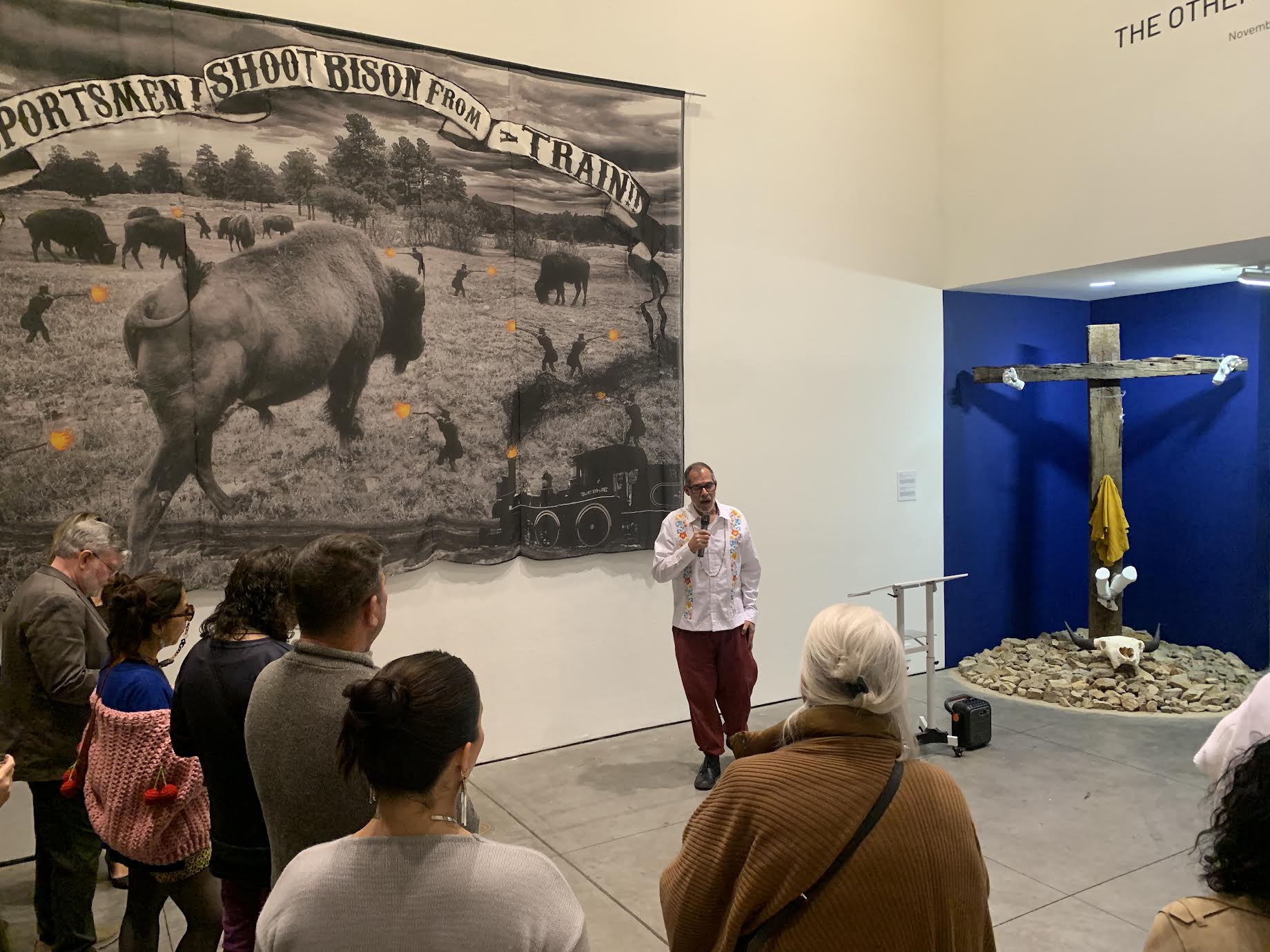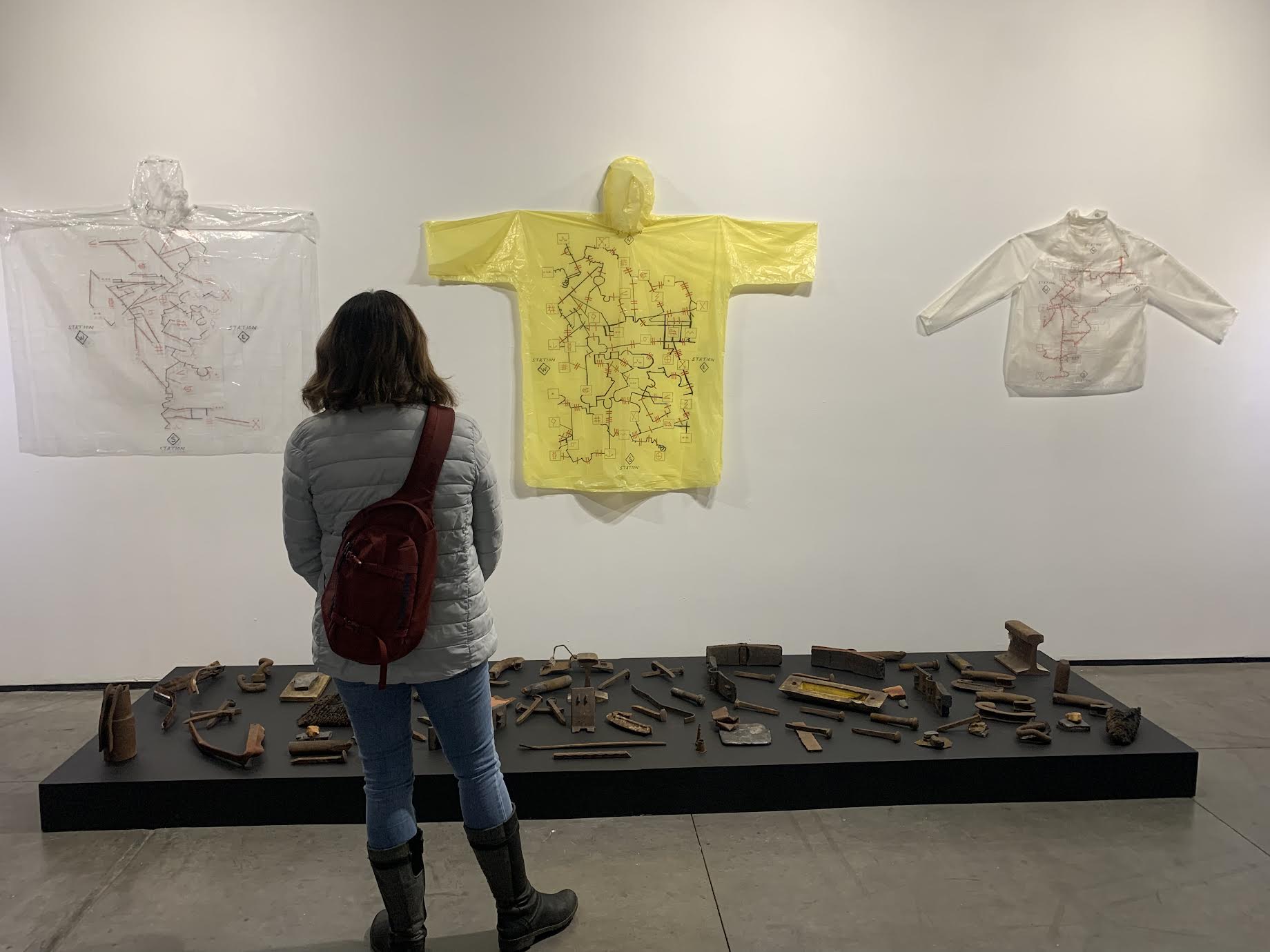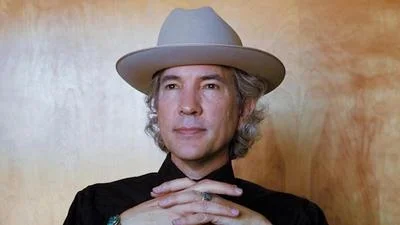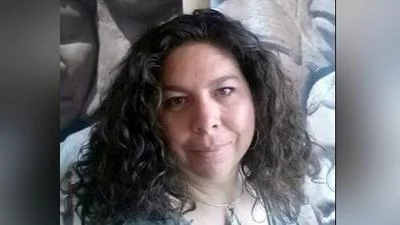History barely remembers Asa Whitney, Theodore Judah, and Lewis Clement, or the thousands of other Americans—Native, Chinese, Irish, Italian, German, Japanese and African—who helped build the first transcontinental railroad.
And by the look of the famous 1869 Golden Spike photograph from Promontory Summit, Utah, you’d never think a non-Caucasian person worked on the railroad. Leland Stanford drove the golden spike into the ground for the media, but millions of other spikes were driven by men and women between 1863-1869. Most of those names are lost to history.
This is something a new exhibit, The Other Side of the Tracks, explores at 516 Arts. According to the exhibit, “There is another story that must be told.”
According to an exhibit press release, important histories are “unaccounted for in our best-known tales of the train—the men, women, and communities transformed but ignored in the dominant narrative of the engine and the nation it built.”
The Other Side of the Tracks is a traveling exhibition. According to its promotional material, it features the work of nine national and internationally recognized contemporary artists from the communities “whose voices have been excluded from the triumphal tales of the track.”
The exhibit shows development “from a perspective Americans have rarely experienced before.” Participating artists visited railway towns and cities, a process the exhibit sponsors say was “innovative and critical to the evolution of the artwork in the exhibition.”
According to the National Archives, an estimated 20,000 people worked on the transcontinental railroad. The Union Pacific employed more than 8,000 Irish, German, and Italian immigrants and built west from Omaha, Nebraska, while the Central Pacific workforce included over 10,000 Chinese laborers and built east from Sacramento, California.
History.com calls the exploitation of labor immigrants and appropriated land, “The Dark Costs”of the transcontinental railroad.
Both Native American and Chinese American voices are heard in the The Other Side of the Tracks. Pulitzer-winning Navajo composer and artist, Raven Chacon, collaborated on a work with Mexican artist, Guillermo Galindo, entitled Score on Rain Panchos. In the piece, raincoats (a possible nod to modern immigration) have a type of map drawn on to them, which are directions for a musical score. Under the raincoats are various implements from railroad work: spikes, tools, clamps, and oil containers.
Chacon and Galindo will perform the score portion of the artwork on Feb. 1 at the symbolically chosen Albuquerque Railyards.
Chinese American voices are heard as well. Caroline Liu, and Albuquerque-based artist, and Zhi Lin, a Chinese American artist living in Washington where he is a professor at the University of Washington, both have beautiful works, representing an integration of Chinese culture and the railroads.
Other artists include Gregg Deal, Paisley Rekdal, Xaviera Simmons, and Chip Thomas. Thomas’ large work, “The Bison Don’t Cross the Track; the Tracks Crossed the Bison” greets visitors as they enter 516 Arts. Thomas, a former medical doctor working on the Navajo Reservation, is a full-time artist integrating photography in large installation works.
The Other Side of the Tracks runs through Feb. 8, 2025. 516 Arts is Located at 516 Central Ave SW, Albuquerque, NM 87102. To watch an introductory video and for more information, go to https://www.516arts.org/exhibitions/the-other-side-of-the-tracks.
Brian C. Nixon, Ph.D., is Chief Academic Officer and professor at Veritas International University in Albuquerque. As a writer, musician, and artist, his interests surround the philosophical transcendentals: truth, beauty, and goodness.You can contact Brian via his Bandcamp email address: https://briancharlesnixon.bandcamp.com

Jorge Rojas speaking at 516 Arts. Photo by Brian Nixon

Visitor looking on Raven Chacon and Guillermo Galindo’s work, Score on Rain Panchos. Photo by Brian Nixon








